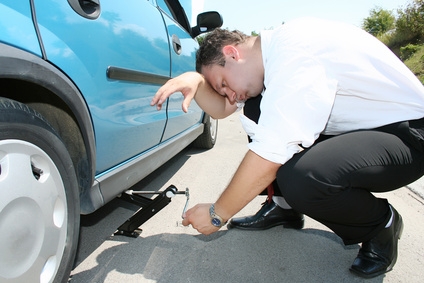
Tire pressure, either underinflated or overinflated, affects the way your car handles in turns, the smoothness of your ride, and your gas mileage. It can also cause tires to blow out at high speeds. There are simple signs that tires need inflating.
When your tires are underinflated, your car can seem to pull to one side when driving on a straightaway. You may also feel a vibration or hear a ticking sound at the speed you would drive in a parking lot.
If you pay attention to your gas mileage, you will notice that you are getting less miles per gallon when your tires are underinflated. Underinflated tires require more energy to roll. You can lose 10% to 50% of your tire's tread life running on routinely underinflated tires.
When your tires are underinflated, they typically have a bulge that isn't on the other tires. The outside tread on your tires wears faster than the inside tread due to underinflation. If your tires are unusually hot, this can indicate a slow leak.